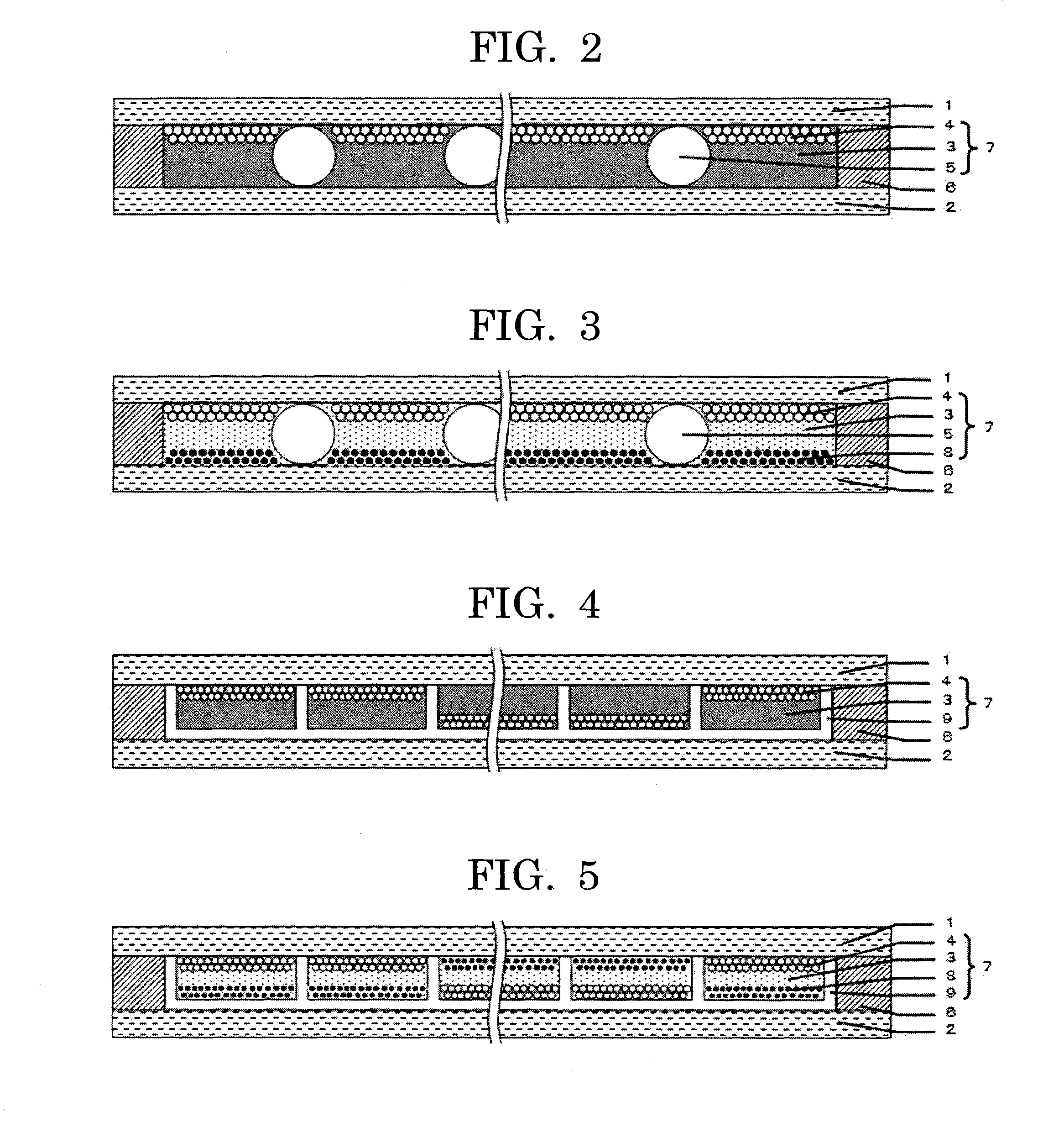Recording medium, image recording apparatus, and image recording set
a recording medium and image recording technology, applied in the field of recording mediums, image recording apparatuses, and image recording sets, can solve the problems of low image contrast, low image contrast, forming abnormal images or low image contrast, and achieves improved image retentiveness and image stability, and high visibility and flexibility.
- Summary
- Abstract
- Description
- Claims
- Application Information
AI Technical Summary
Benefits of technology
Problems solved by technology
Method used
Image
Examples
example 1
Production of Dispersion Liquid for Forming Image Recording Layer
[0454]First, 25 parts by mass of the electret particles 1 was added to a solution obtained by mixing 0.5 parts by mass of a blue dye (OIL BLUE 2N, manufactured by Orient Chemical Industries Co., Ltd.), 0.5 parts by mass of an non-ionic surfactant (sorbitan monolaurate SPAN 20, reagent), and 74 parts by mass of an isoparaffin-based hydrocarbon solvent (trade name: ISOPAR G, manufactured by ExxonMobil Chemical), followed by subjected to ultrasonic dispersion for 120 min. The resultant dispersion liquid was heated to 70° C. To this, 3 parts by mass of the thermoreversible gelling agent represented by the following Structural Formula (1) was added and stirred, followed by subjected to ultrasonic dispersion for 60 min while keeping the same temperature to thereby produce a dispersion liquid for forming an image recording layer.
[0455]Notably, the isoparaffin-based hydrocarbon solvent was turned into a sol at 51° C. and turne...
example 2
[0462]The recording medium was produced in the same manner as in Example 1, except that the electret particles 1 were changed to electret particles 2, and the thermoreversible gelling agent was changed to the thermoreversible gelling agent represented by the following Structural Formula (2).
[0463]Notably, the isoparaffin-based hydrocarbon solvent was turned into a sol at 59° C. and turned into a gel at 24° C. by an action of the thermoreversible gelling agent.
[0464]The thermoreversible gelling agent represented by the following Structural Formula (2) was synthesized with reference to a method for synthesizing a silicone derivative described in Example 7 in JP-A No. 2004-182697.
[0465]The image recording layer was formed in the same manner as in Example 1.
[0466]The recording medium was produced in the same manner as in Example 1. The resultant recording medium was confirmed that it was returned to its original shape without damage even after being rolled up, that is, it had a flexibil...
example 3
Production of Dispersion Liquid for Forming Image Recording Layer
[0478]Firstly, 40 parts by mass of the electret particles 3, 2.5 parts by mass of the electrophoretic particle 2, 0.5 parts by mass of an non-ionic surfactant (sorbitan trioleate SPAN 85, reagent), and 57 parts by mass of silicone oil (KF-96L 1cs, manufactured by Shin-Etsu Chemical Co., Ltd.) were mixed, followed by subjected to ultrasonic dispersion for 120 min to thereby obtain a dispersion liquid. The resultant dispersion liquid was heated to 70° C. To this, 5 parts by mass of the thermoreversible gelling agent represented by the following Structural Formula (3) was added and stirred, followed by subjected to ultrasonic dispersion for 60 min while keeping the same temperature to thereby produce a dispersion liquid for forming an image recording layer.
[0479]Notably, the silicone oil was turned into a sol at 66° C. and turned into a gel at 41° C. by an action of the thermoreversible gelling agent.
[0480]The thermorever...
PUM
| Property | Measurement | Unit |
|---|---|---|
| volume resistivity | aaaaa | aaaaa |
| volume resistivity | aaaaa | aaaaa |
| thickness | aaaaa | aaaaa |
Abstract
Description
Claims
Application Information
 Login to View More
Login to View More - R&D
- Intellectual Property
- Life Sciences
- Materials
- Tech Scout
- Unparalleled Data Quality
- Higher Quality Content
- 60% Fewer Hallucinations
Browse by: Latest US Patents, China's latest patents, Technical Efficacy Thesaurus, Application Domain, Technology Topic, Popular Technical Reports.
© 2025 PatSnap. All rights reserved.Legal|Privacy policy|Modern Slavery Act Transparency Statement|Sitemap|About US| Contact US: help@patsnap.com



